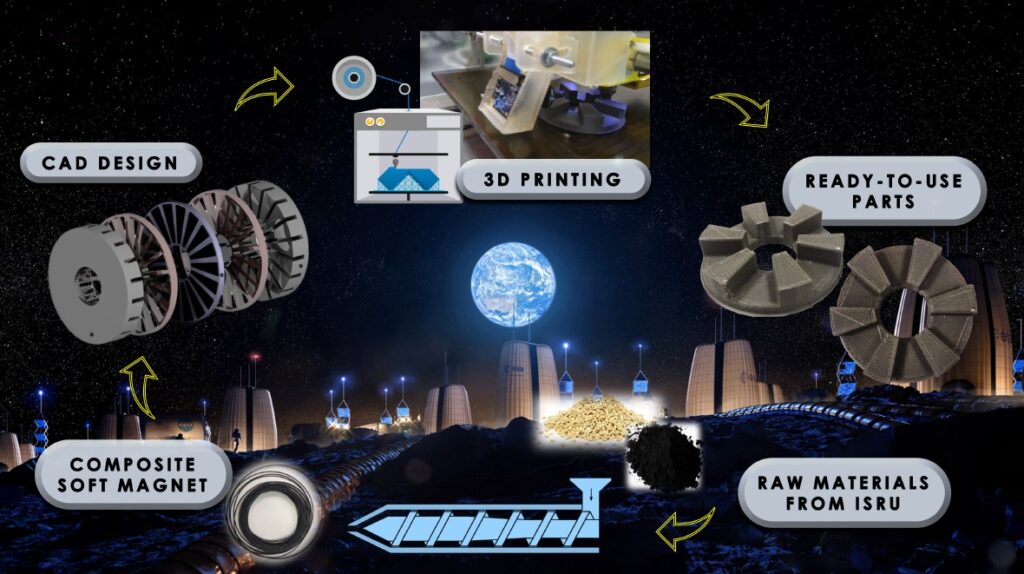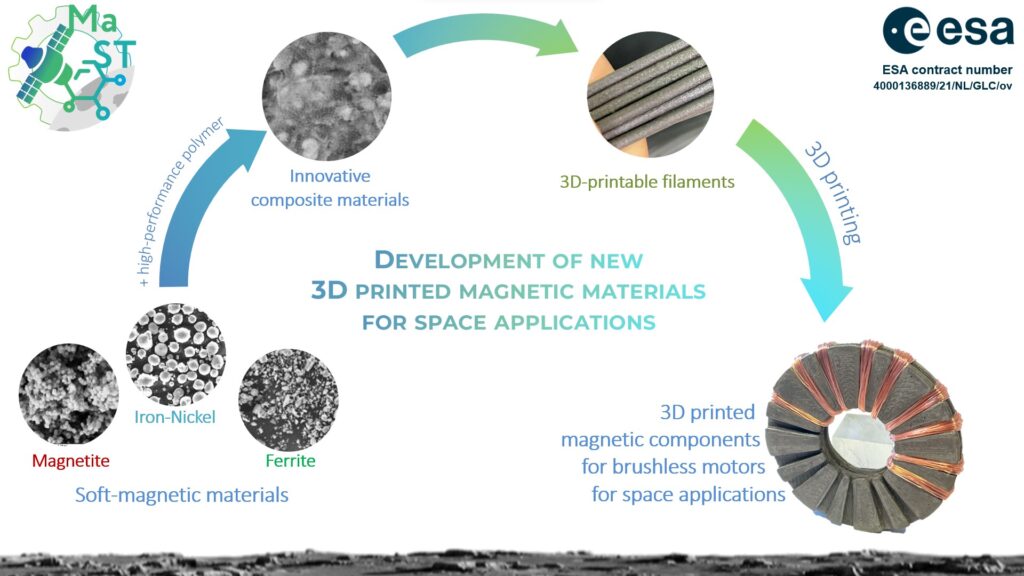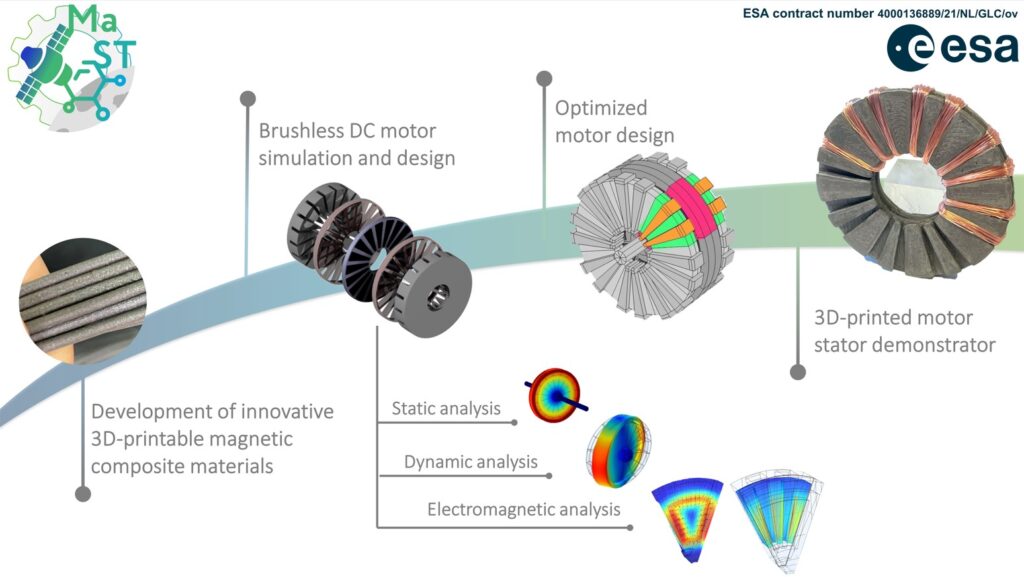
Development of new 3D printed magnetic materials for space applications
European Space Agency (ESA) “Open Space Innovation Platform (OSIP) “
Idea n. I-2021-03347, CUP E83C22004310007, ESA contract 4000136889/21/NL/GLC/ov

Soft magnets are vital for many devices onboard spacecraft. However, soft magnetic materials and their manufacturing processes face critical issues such as limited design flexibility and material waste. This early technology development project aims to develop and demonstrate a method to 3D print soft magnetic materials based on naturally ferromagnetic powders, which may be available on the surfaces of other planets and moons. Considering lunar exploration, this process could be key to using moondust to 3D print an electric motor on the Moon.
Click here for more details on the background
Among the several criticalities for future space exploration and colonization is undoubtedly the supply of raw materials to manufacture every component needed. The utilization of in situ resources present on the surface of a moon/planet, as well as secondary raw materials extracted from end-of-life components, represents the only sustainable solution for long-term out-of-Earth permanence.
Moreover, Additive Manufacturing (AM, commonly known as 3D printing) is a new paradigm of manufacturing with unrivalled freedom of geometry and equipment flexibility, which is ideal for low-volume production and customizability required from the Lunar exploration. Indeed, 3D-printing equipment can manufacture any geometry without the need for molds or fixtures specific for a single part, and therefore it is especially suitable not only for in space manufacturing but also on Earth applications with low production volumes, complex and optimized geometries, and custom high-performance materials. Among the 3D printing technologies, Fused Filament Fabrication (FFF) is a material extrusion-based technique which has been proven to be employable in reduced or zero gravity, and therefore represents the most promising way to additively manufacture component in the space environment. Moreover, Fused Filament Fabrication presents low equipment cost, low material waste and general ease of processing compared to other Additive Manufacturing technologies, and it is thus favorably applied in a variety of on-earth applications.
Magnetic materials, both with soft and hard magnetic behavior, are key components in many devices aboard any spacecraft, such as motors, mechanisms, actuators and sensors. The most common route for the manufacturing of magnets is the sintering process, which produces the highest magnetic performance possible but it is energy intensive and requires molds for each geometry. The alternative is the use of bonded magnets, which are composite materials composed of a polymeric matrix with a high content of magnetic filler. Being polymer-based, bonded magnets can benefit from all the manufacturing processes typical of polymers, such as extrusion, injection molding or filament based 3D printing. Therefore, the possibility of manufacturing magnetic components with an Additive Manufacturing process and with materials available in situ is a valuable perspective for the future of space agencies.
Therefore, the aim of this project was to develop innovative composite and nanocomposite materials with soft magnetic fillers processable via Fused Filament Fabrication 3D printing to manufacture brushless motor components for space applications. With the developed materials, a brushless direct current motor was designed via Finite Element analysis to optimize the static, dynamic and electromagnetic performances arising from the mechanical and electromagnetic properties of the 3D printed soft magnets. Finally, a prototype of a motor stator with the optimized design and best performing material was 3D printed as a proof of concept of the application on the innovative composite for low power motors in space environment.
Main achievements
- Developed innovative 3D-printable composite materials with soft-magnetic properties based on high-performance polymers.
- Designed a brushless DC motor with optimized geometry employing the developed magnetic composite materials.
- 3D-printed a demonstrator of a motor stator with the best-performing composite material.
Outlook
The possibility to 3D-print not only the soft-magnetic materials developed in this project but also hard-magnetic composite materials, developed in a previous work, would open the opportunity to manufacture a fully 3D-printed Brushless DC motor, which would benefit from great advantages:
- recyclability, thanks to the thermoplastic nature of the composites matrix;
- great reduction of losses caused by eddy currents, being the composites generally non-conductive;•
- 3D-printability in situ (also in reduced or zero gravity) with no need of specific molds and fixtures for each geometry.


Team
Scientific Coordinator: Marianna Rinaldi
Bid Manager: Francesca Nanni
Investigators: Lorenzo Paleari, Miriam Ferrara, Mario Bragaglia
Students: Claudio Del Vecchio, Andrea Spiti, Andrea Boschetti
ESA Technical Officer: Martina Meisnar

